 Search by Keyword
|
“I’M ONLY SLEEPING”
(John Lennon – Paul McCartney)
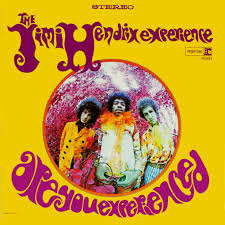 The Beatles were the first at many things, especially in regard to recording techniques. Easily becoming bored in the studio, they were eager to try new things. One of these was recording guitar backwards, which they did in 1966 with the song “I’m Only Sleeping.” The eerie drone that resulted became irresistible to recording artists the world over, everyone wanting to give it a try. Popular examples include “Are You Experienced?” by The Jimi Hendrix Experience, “Cosmic Dancer” by T. Rex, “Book Of Saturday” by King Crimson and even “Give It Away” by The Red Hot Chili Peppers, among many many others. The Beatles were the first at many things, especially in regard to recording techniques. Easily becoming bored in the studio, they were eager to try new things. One of these was recording guitar backwards, which they did in 1966 with the song “I’m Only Sleeping.” The eerie drone that resulted became irresistible to recording artists the world over, everyone wanting to give it a try. Popular examples include “Are You Experienced?” by The Jimi Hendrix Experience, “Cosmic Dancer” by T. Rex, “Book Of Saturday” by King Crimson and even “Give It Away” by The Red Hot Chili Peppers, among many many others.
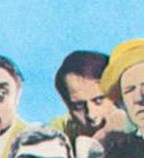 Although The Beatles weren't the first artists to incorporate backwards recordings within their music (avant-garde composers like John Cage, Edgard Varese and Karlheinz Stockhausen, as seen on the Sgt Pepper cover, accomplished this back in the '50s), John, Paul, George and Ringo were the first musical act to introduce this unique innovation into popular music. The resulting sound is evocative of the psychedelic era, but to use it accurately and to good effect is an art. It takes much more than just recording a guitar with the tape reversed and then turning it around for playback in the proper direction. They worked to perfect it right from the beginning, taking as much time as they needed to do it right. Although they did use backward recording on other instruments (and vocals) periodically throughout the rest of their career, it was done rather sparingly. Their ongoing experimentation, with the help of the EMI staff, went in many other directions, and we can be very grateful for their desire to continually 'push the envelope.’ Although The Beatles weren't the first artists to incorporate backwards recordings within their music (avant-garde composers like John Cage, Edgard Varese and Karlheinz Stockhausen, as seen on the Sgt Pepper cover, accomplished this back in the '50s), John, Paul, George and Ringo were the first musical act to introduce this unique innovation into popular music. The resulting sound is evocative of the psychedelic era, but to use it accurately and to good effect is an art. It takes much more than just recording a guitar with the tape reversed and then turning it around for playback in the proper direction. They worked to perfect it right from the beginning, taking as much time as they needed to do it right. Although they did use backward recording on other instruments (and vocals) periodically throughout the rest of their career, it was done rather sparingly. Their ongoing experimentation, with the help of the EMI staff, went in many other directions, and we can be very grateful for their desire to continually 'push the envelope.’
Songwriting History
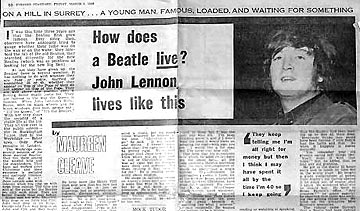 In 1972, John told Hit Parader Magazine that he composed “I’m Only Sleeping” by himself, adding in a 1980 interview “That’s me 'dreaming my life away,'” thus quoting his current song "Watching The Wheels." Corroborating this point is the Evening Standard article written by Maureen Cleave (the same article that included the “more popular than Jesus” statement) from March of 1966 which states: “He (John) can sleep almost indefinitely, is probably the laziest person in England. ‘Physically lazy,’ he said. ‘I don’t mind writing or reading or watching or speaking, but sex is the only physical thing I can be bothered with any more.’” In 1972, John told Hit Parader Magazine that he composed “I’m Only Sleeping” by himself, adding in a 1980 interview “That’s me 'dreaming my life away,'” thus quoting his current song "Watching The Wheels." Corroborating this point is the Evening Standard article written by Maureen Cleave (the same article that included the “more popular than Jesus” statement) from March of 1966 which states: “He (John) can sleep almost indefinitely, is probably the laziest person in England. ‘Physically lazy,’ he said. ‘I don’t mind writing or reading or watching or speaking, but sex is the only physical thing I can be bothered with any more.’”
 “The song was written and arranged in one writing session, co-written but from John’s original idea.” So claims Barry Miles in his book “Many Years From Now,” which also relates more details of the inspiration. He states: “Often Paul would be John’s morning alarm call. Living at Wimpole Street…meant he got up earlier than John and packed more into each day. John led a more relaxed suburban life but if he went to dinner in London or to a club, living so far from town meant that he returned home very late. Paul would arrive at midday or the early afternoon and wake him up, which was where John got the idea for ‘I’m Only Sleeping.’” “The song was written and arranged in one writing session, co-written but from John’s original idea.” So claims Barry Miles in his book “Many Years From Now,” which also relates more details of the inspiration. He states: “Often Paul would be John’s morning alarm call. Living at Wimpole Street…meant he got up earlier than John and packed more into each day. John led a more relaxed suburban life but if he went to dinner in London or to a club, living so far from town meant that he returned home very late. Paul would arrive at midday or the early afternoon and wake him up, which was where John got the idea for ‘I’m Only Sleeping.’”
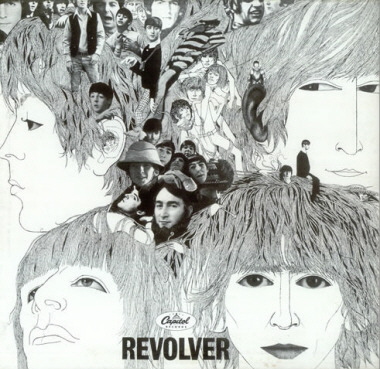 Claiming his collaboration on the song, Paul himself explains, “One day I led the dance, like ‘Paperback Writer,’ and another day John would lead the dance, like ‘I’m Only Sleeping.’ It was nice; we weren’t really competitive as to who started the song.” While the dreamy ‘floating-like’ recording made for the “Revolver” album may instill thoughts of drug use, Paul insists on a much more innocent interpretation. “It was a nice idea, there’s nothing wrong with it. I’m not being lazy, I’m only sleeping, I’m yawning, I’m meditating, I’m having a lay-in – the luxury of all of that was what it was about.” Claiming his collaboration on the song, Paul himself explains, “One day I led the dance, like ‘Paperback Writer,’ and another day John would lead the dance, like ‘I’m Only Sleeping.’ It was nice; we weren’t really competitive as to who started the song.” While the dreamy ‘floating-like’ recording made for the “Revolver” album may instill thoughts of drug use, Paul insists on a much more innocent interpretation. “It was a nice idea, there’s nothing wrong with it. I’m not being lazy, I’m only sleeping, I’m yawning, I’m meditating, I’m having a lay-in – the luxury of all of that was what it was about.”
 Taking a look at the actual lyrics John jotted down when the song was written also reveals the simple images of wanting to sleep. Actually, this manuscript gives us a big clue as to exactly when the song was written. The original lyrics were scribbled on the back of a letter from the Post Office reminding John that he owed 12 pounds and three shillings for an outstanding radiophone bill, having a telephone in your car being quite the luxury in 1966. The letter was stamped April 25th, 1966 and, since the completed song began being recorded two days later on April 27th, it becomes quite probable that the date of the song's writing was between April 26th and 27th, 1966. As to whether John ever paid his bill, no one knows. However, this actual letter, with his scribbled and crossed-out lyrics on the back, fetched over a half a million dollars at an auction in December of 2010. Taking a look at the actual lyrics John jotted down when the song was written also reveals the simple images of wanting to sleep. Actually, this manuscript gives us a big clue as to exactly when the song was written. The original lyrics were scribbled on the back of a letter from the Post Office reminding John that he owed 12 pounds and three shillings for an outstanding radiophone bill, having a telephone in your car being quite the luxury in 1966. The letter was stamped April 25th, 1966 and, since the completed song began being recorded two days later on April 27th, it becomes quite probable that the date of the song's writing was between April 26th and 27th, 1966. As to whether John ever paid his bill, no one knows. However, this actual letter, with his scribbled and crossed-out lyrics on the back, fetched over a half a million dollars at an auction in December of 2010.
Recording History
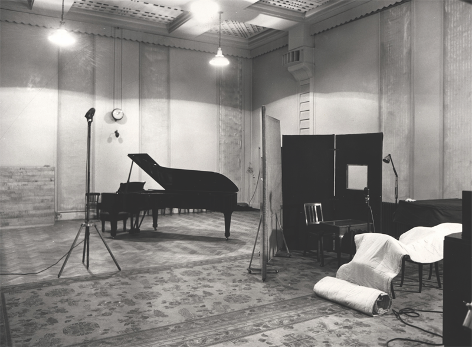 On April 27th, 1966, the fourteenth day of recording sessions for what became their “Revolver” album, The Beatles convened in EMI Studio Three to start work on “I’m Only Sleeping.” Before recording began, however, they were present in the control room to oversee multiple mono mixes of three recently recorded songs, none of which ended up making it onto the finished album, and a reduction mix ("take 15") of "Eleanor Rigby," which was the first thing added to a new four-track tape. It wasn’t until 11:30 pm that they found their way into the actual recording studio to add to this new tape rehearsals of their new song "I'm Only Sleeping," their actual tiredness undoubtedly being appropriate to the occasion. On April 27th, 1966, the fourteenth day of recording sessions for what became their “Revolver” album, The Beatles convened in EMI Studio Three to start work on “I’m Only Sleeping.” Before recording began, however, they were present in the control room to oversee multiple mono mixes of three recently recorded songs, none of which ended up making it onto the finished album, and a reduction mix ("take 15") of "Eleanor Rigby," which was the first thing added to a new four-track tape. It wasn’t until 11:30 pm that they found their way into the actual recording studio to add to this new tape rehearsals of their new song "I'm Only Sleeping," their actual tiredness undoubtedly being appropriate to the occasion.
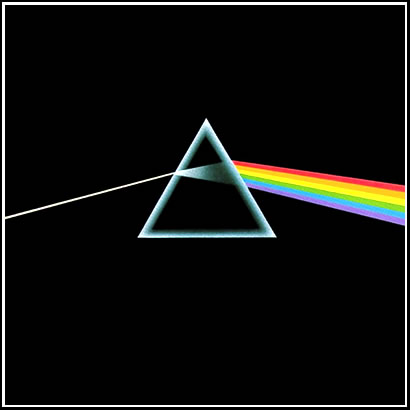 “I believe we taught George Martin how to keep the tape rolling,” Ringo remembers about the sessions of those times. “He lost that old attitude that you only press the button when you are going to do the take. We began to have the tape rolling all of the time.” Mark Lewisohn, in his book “The Beatles Recording Sessions,” explained further about this practice as one of the new recording techniques they began early in 1965, saying The Beatles would then "rehearse songs with a tape machine running, spooling back to record properly over the rehearsed material." In fact, this particular tape had been recorded on and then reused for new material several times. EMI was concerned at the time with the expense of each spool of tape, some master tapes even being recycled for use by other artists as in the case of George Martin's orchestral recording of "Ticket To Ride" being recorded over by Pink Floyd for the track "Eclipse" on their album "The Dark Side Of The Moon." “I believe we taught George Martin how to keep the tape rolling,” Ringo remembers about the sessions of those times. “He lost that old attitude that you only press the button when you are going to do the take. We began to have the tape rolling all of the time.” Mark Lewisohn, in his book “The Beatles Recording Sessions,” explained further about this practice as one of the new recording techniques they began early in 1965, saying The Beatles would then "rehearse songs with a tape machine running, spooling back to record properly over the rehearsed material." In fact, this particular tape had been recorded on and then reused for new material several times. EMI was concerned at the time with the expense of each spool of tape, some master tapes even being recycled for use by other artists as in the case of George Martin's orchestral recording of "Ticket To Ride" being recorded over by Pink Floyd for the track "Eclipse" on their album "The Dark Side Of The Moon."
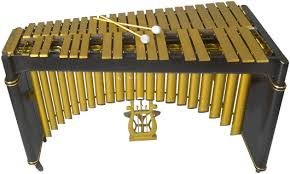 This April 27th, 1966 session for “I’m Only Sleeping” shows evidence of this practice of keeping the tapes rolling. The Beatles ran through a good degree of taped rehearsal of the song with Lennon on acoustic guitar and Ringo on drums, McCartney also experimenting on a vibraphone that happened to be present in the studio at that time. Having dropped the idea of using a vibraphone, they then decided that they were ready to start taping a new version of the song. So, having spooled the tape back to just after the reduction mix of "Eleanor Rigby," proper recording began. After the official takes of "I'm Only Sleeping" filled up most of the tape, about one minute of their rehearsals with the vibraphone were found to be still present on the tape, these later being included on both the "Anthology 2" album and the 2022 Deluxe editions of "Revolver." This April 27th, 1966 session for “I’m Only Sleeping” shows evidence of this practice of keeping the tapes rolling. The Beatles ran through a good degree of taped rehearsal of the song with Lennon on acoustic guitar and Ringo on drums, McCartney also experimenting on a vibraphone that happened to be present in the studio at that time. Having dropped the idea of using a vibraphone, they then decided that they were ready to start taping a new version of the song. So, having spooled the tape back to just after the reduction mix of "Eleanor Rigby," proper recording began. After the official takes of "I'm Only Sleeping" filled up most of the tape, about one minute of their rehearsals with the vibraphone were found to be still present on the tape, these later being included on both the "Anthology 2" album and the 2022 Deluxe editions of "Revolver."
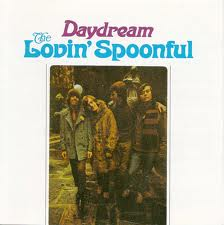 Eleven takes of "I'm Only Sleeping" began at this point ("take ten" being omitted), the first five being captured on this first tape. John sang lead vocals and strummed acoustic guitar, Paul sang harmony vocals, Harrison played electric guitar (simulating The Lovin' Spoonful's top ten UK hit "Daydream") and Ringo played tambourine, all of these elements being allocated onto one track of the four-track tape. While the earlier rehearslas were played in the key of E minor, they apparently detuned their guitars to E-flat minor during the first few takes (according to the liner notes in the Deluxe editions of "Revolver") in order to create a dream-like state for the recording. Eleven takes of "I'm Only Sleeping" began at this point ("take ten" being omitted), the first five being captured on this first tape. John sang lead vocals and strummed acoustic guitar, Paul sang harmony vocals, Harrison played electric guitar (simulating The Lovin' Spoonful's top ten UK hit "Daydream") and Ringo played tambourine, all of these elements being allocated onto one track of the four-track tape. While the earlier rehearslas were played in the key of E minor, they apparently detuned their guitars to E-flat minor during the first few takes (according to the liner notes in the Deluxe editions of "Revolver") in order to create a dream-like state for the recording.
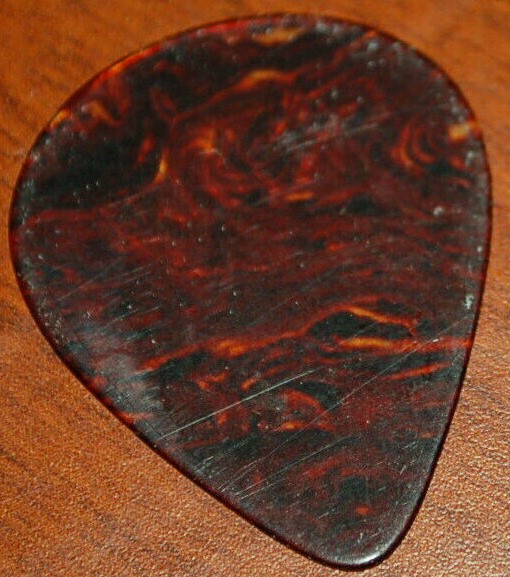 "Take one" from this day appeared on "Anthology 2," while the incomplete "take two" was featured in the 2022 Deluxe editions of "Revolver," this take breaking down after the second verse because of John's coming in too early, resulting in his exclamation "Sorry, sorry," and inquiring about the balance between his and George's guitars. "I'll just have to vemp it up a bit...now he tells me" he exclaims, requesting to McCartney, "Are you going to sing or ain't you?" "Mal, can you get this boy a plectrum?" he asks assistant Mal Evans so that Paul can play bass with a pick on future takes. "Take one" from this day appeared on "Anthology 2," while the incomplete "take two" was featured in the 2022 Deluxe editions of "Revolver," this take breaking down after the second verse because of John's coming in too early, resulting in his exclamation "Sorry, sorry," and inquiring about the balance between his and George's guitars. "I'll just have to vemp it up a bit...now he tells me" he exclaims, requesting to McCartney, "Are you going to sing or ain't you?" "Mal, can you get this boy a plectrum?" he asks assistant Mal Evans so that Paul can play bass with a pick on future takes.
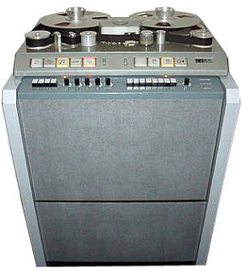 By "take five" they resumed playing the song in E minor but playing faster, the intention being to slow the track down later to create a dreamy sleep-like effect. This take, which was included in the Deluxe editions of "Revolver," comprised John's acoustic guitar, Paul's bass and Ringo's drums allocated to track one of the tape, no vocals being recorded at this time. More takes were needed so a switch to another four-track tape was made to capture the remaining attempts at the rhythm track. After "take nine" (there was no "take 10" for some reason), they sped up the tape to 56 kilocycles instead of the normal rate of 50. "Take 11" was determined to be the keeper, which included someone keeping the beat in the open spaces of their breaks by snapping their fingers (which can quietly be heard just before the first bridge in the released recording). Thereafter, the session ended at 3 am the following morning, The Beatles needing some actual "sleeping" time by that point. By "take five" they resumed playing the song in E minor but playing faster, the intention being to slow the track down later to create a dreamy sleep-like effect. This take, which was included in the Deluxe editions of "Revolver," comprised John's acoustic guitar, Paul's bass and Ringo's drums allocated to track one of the tape, no vocals being recorded at this time. More takes were needed so a switch to another four-track tape was made to capture the remaining attempts at the rhythm track. After "take nine" (there was no "take 10" for some reason), they sped up the tape to 56 kilocycles instead of the normal rate of 50. "Take 11" was determined to be the keeper, which included someone keeping the beat in the open spaces of their breaks by snapping their fingers (which can quietly be heard just before the first bridge in the released recording). Thereafter, the session ended at 3 am the following morning, The Beatles needing some actual "sleeping" time by that point.
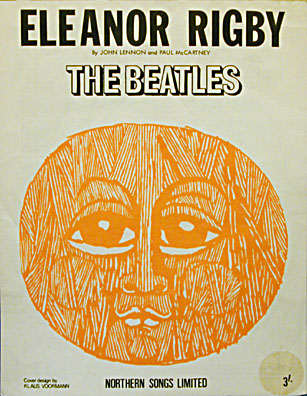 Two days later, on April 29th, 1966, The Beatles entered EMI Studio Three at 5 pm to take another crack at the song, but not before more vocal overdubbing and mixing being done to "Eleanor Rigby." At approximately 7 pm, they commenced with overdubbing vocals onto "take 11" of “I’m Only Sleeping.” John's lead vocals were recorded onto track four of the four-track tape with the machine running at 45 cycles instead of 50, which would speed up John's voice quite considerably on playback, especially since the rhythm track onto which his vocals were recorded was running at 56 cycles and played back at 47 3/4 cycles. Two days later, on April 29th, 1966, The Beatles entered EMI Studio Three at 5 pm to take another crack at the song, but not before more vocal overdubbing and mixing being done to "Eleanor Rigby." At approximately 7 pm, they commenced with overdubbing vocals onto "take 11" of “I’m Only Sleeping.” John's lead vocals were recorded onto track four of the four-track tape with the machine running at 45 cycles instead of 50, which would speed up John's voice quite considerably on playback, especially since the rhythm track onto which his vocals were recorded was running at 56 cycles and played back at 47 3/4 cycles.
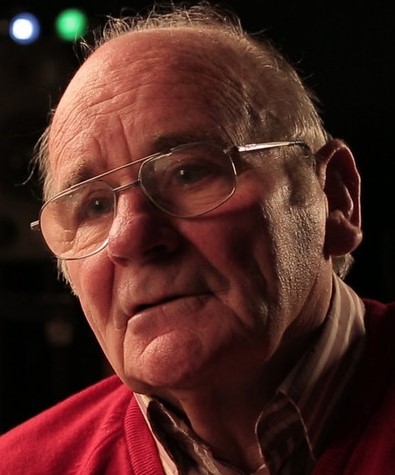 As we can see, The Beatles and the engineering staff were doing a lot of experimentation with tape speed at this point, this being an off-shoot of EMI technician Ken Townsend's newly innovative ADT ("Artificial Double Tracking") technology. Afterward, John, Paul and George's harmony vocals were added to track three of the tape. It was during this session that Paul’s yawn was added just before the last bridge, preceded by John’s instruction “yawn, Paul” which can quietly be heard on the finished recording.“We tried to get the vocals to sound like somebody’s asleep, which is very difficult,” Harrison explained. By 1 am the following morning, all of the vocals to the song were complete and the session ended. As we can see, The Beatles and the engineering staff were doing a lot of experimentation with tape speed at this point, this being an off-shoot of EMI technician Ken Townsend's newly innovative ADT ("Artificial Double Tracking") technology. Afterward, John, Paul and George's harmony vocals were added to track three of the tape. It was during this session that Paul’s yawn was added just before the last bridge, preceded by John’s instruction “yawn, Paul” which can quietly be heard on the finished recording.“We tried to get the vocals to sound like somebody’s asleep, which is very difficult,” Harrison explained. By 1 am the following morning, all of the vocals to the song were complete and the session ended.
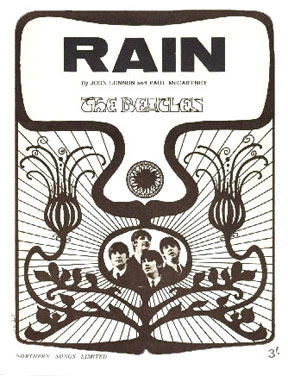 Their next recording session was on May 5th, 1966 in EMI Studio Three beginning at 9:30 pm. This five-and-a-half hour session (ending at 3 am the next day) accomplished only one thing, but it was well worth the time spent. The very first backwards guitar heard in popular music history was performed on this day, the results standing the world on its ear! Recorded onto track two of the four-track tape were little snippets of backward guitar lines peppered throughout the verses which could be faded up and down during the mixing stage where they saw fit. According to George Harrison, they actually experimented with backwards guitar during the making of the song “Rain” on April 14th of that year, although the results were either omitted or buried somewhere in the mix. “We turned the tape over and put it on backwards, and then played some guitar notes to it,” he remembers, “just playing little bits, guessing, hoping it fitted in…we were excited to hear what it sounded like, and it was magic.” Their next recording session was on May 5th, 1966 in EMI Studio Three beginning at 9:30 pm. This five-and-a-half hour session (ending at 3 am the next day) accomplished only one thing, but it was well worth the time spent. The very first backwards guitar heard in popular music history was performed on this day, the results standing the world on its ear! Recorded onto track two of the four-track tape were little snippets of backward guitar lines peppered throughout the verses which could be faded up and down during the mixing stage where they saw fit. According to George Harrison, they actually experimented with backwards guitar during the making of the song “Rain” on April 14th of that year, although the results were either omitted or buried somewhere in the mix. “We turned the tape over and put it on backwards, and then played some guitar notes to it,” he remembers, “just playing little bits, guessing, hoping it fitted in…we were excited to hear what it sounded like, and it was magic.”
 However, McCartney remembers things a little differently. He recalls that George was attempting to record backward guitar for “I’m Only Sleeping” on May 5th, 1966 when the tape operator inadvertently put the tape on "tails out," which created quite a stir when The Beatles heard it played back to them. “It played backwards,” Paul explains as if this was the first time they heard backward guitars. He continued, “and, ‘What the hell is going on?’ Those effects! Nobody knew how those sounded then. We said, ‘My God, that is fantastic! Can we do that for real?’ So George Martin, give him his due, being amenable to ideas like that, being quite experimental for who he was, a grown-up, said, ‘Yes. Sure, I think we can do that.’ So that was what we did and that was where we discovered backwards guitar...it sounds like something you couldn’t play.” However, McCartney remembers things a little differently. He recalls that George was attempting to record backward guitar for “I’m Only Sleeping” on May 5th, 1966 when the tape operator inadvertently put the tape on "tails out," which created quite a stir when The Beatles heard it played back to them. “It played backwards,” Paul explains as if this was the first time they heard backward guitars. He continued, “and, ‘What the hell is going on?’ Those effects! Nobody knew how those sounded then. We said, ‘My God, that is fantastic! Can we do that for real?’ So George Martin, give him his due, being amenable to ideas like that, being quite experimental for who he was, a grown-up, said, ‘Yes. Sure, I think we can do that.’ So that was what we did and that was where we discovered backwards guitar...it sounds like something you couldn’t play.”
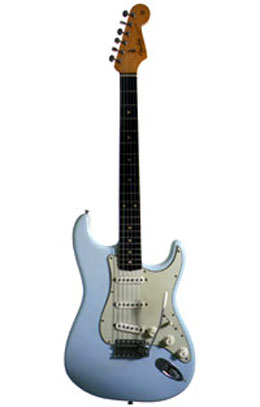 The next day, May 6th, 1966, saw the group enter EMI Studio Two at 2:30 pm for their last session concerning “I’m Only Sleeping.” After creating two reduction mix attempts, numbered "take 12" and "take 13," which combined the vocals from tracks three and four to track three of the new tape, the backward guitar solo, as well as some additional backward guitar pieces from track two, was added to the now available track four of the new tape. Author Mark Lewisohn describes that, instead of just playing a guitar solo normally and then turning the tape around, George Harrison wanted a precise melody line that he had written played backward. This involved “working out the notation forwards, writing it out backwards, then playing it as the notation says, so that it comes out back to front. This way, although the sound still has the aural attraction of a backwards tape the instrument is actually playing a melodic run of notes.” The next day, May 6th, 1966, saw the group enter EMI Studio Two at 2:30 pm for their last session concerning “I’m Only Sleeping.” After creating two reduction mix attempts, numbered "take 12" and "take 13," which combined the vocals from tracks three and four to track three of the new tape, the backward guitar solo, as well as some additional backward guitar pieces from track two, was added to the now available track four of the new tape. Author Mark Lewisohn describes that, instead of just playing a guitar solo normally and then turning the tape around, George Harrison wanted a precise melody line that he had written played backward. This involved “working out the notation forwards, writing it out backwards, then playing it as the notation says, so that it comes out back to front. This way, although the sound still has the aural attraction of a backwards tape the instrument is actually playing a melodic run of notes.”
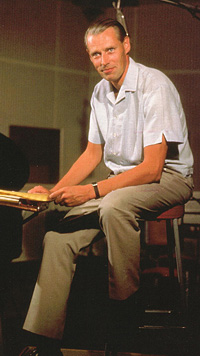 You can probably guess who was asked to transcribe his melody line backward so that he could play it that way. George Martin became the man who was up to the task. With the notes transcribed for him, George Harrison took the entire day to record, not one, but actually two guitar solos on top of each other with two different melody lines. One of the solos was done using his “fuzz box” and one with a regular electric guitar. You can probably guess who was asked to transcribe his melody line backward so that he could play it that way. George Martin became the man who was up to the task. With the notes transcribed for him, George Harrison took the entire day to record, not one, but actually two guitar solos on top of each other with two different melody lines. One of the solos was done using his “fuzz box” and one with a regular electric guitar.
 Engineer Geoff Emerick, in his book “Here, There And Everywhere,” recounts this day in Studio Three: “There was one especially tedious session where we all wished we had never come up with the concept of backwards sounds. The song was ‘I’m Only Sleeping,’ and George Harrison was determined to play a backwards guitar solo on it. At the best of times, he had trouble playing solos all the way through forwards, so it was with great trepidation that we all settled in for what turned out to be an interminable day of listening to the same eight bars played backwards over and over and over again." George's intention was to similate a raga as heard in Indian classical music. Engineer Geoff Emerick, in his book “Here, There And Everywhere,” recounts this day in Studio Three: “There was one especially tedious session where we all wished we had never come up with the concept of backwards sounds. The song was ‘I’m Only Sleeping,’ and George Harrison was determined to play a backwards guitar solo on it. At the best of times, he had trouble playing solos all the way through forwards, so it was with great trepidation that we all settled in for what turned out to be an interminable day of listening to the same eight bars played backwards over and over and over again." George's intention was to similate a raga as heard in Indian classical music.
 “Phil McDonald told me later that his arms were sore for days afterward from having to repeatedly lift the heavy tape reels off the machine and turn them over. I can still picture George – and later, Paul, who joined him to play the backwards outro in a bizarre duet – hunched over his guitar for hours on end, headphones clamped on, brows furrowed in concentration. George Martin conducted them from the window of the control room, using grease pencil marks I had put on the back of the tape on each beat as a reference.” From the above eyewitness account, we learn that Paul was also involved in playing the backward guitar overdub heard in the song's faded conclusion. Since there were four different mixes (two mono and two stereo) that ended up being released in the US, examination shows that each one contains different configurations of the backward guitar overdubs. “Phil McDonald told me later that his arms were sore for days afterward from having to repeatedly lift the heavy tape reels off the machine and turn them over. I can still picture George – and later, Paul, who joined him to play the backwards outro in a bizarre duet – hunched over his guitar for hours on end, headphones clamped on, brows furrowed in concentration. George Martin conducted them from the window of the control room, using grease pencil marks I had put on the back of the tape on each beat as a reference.” From the above eyewitness account, we learn that Paul was also involved in playing the backward guitar overdub heard in the song's faded conclusion. Since there were four different mixes (two mono and two stereo) that ended up being released in the US, examination shows that each one contains different configurations of the backward guitar overdubs.
 By 1 am this session, and therefore the song, was complete, although the production staff, including Geoff Emerick as cheif engineer, continued on until 2:15 am to create four mono mixes of the song, none of which were ever used at the time. However, the first mono mix created on this day, labeled as "Mono Mix RM1," did get released in 2022 on the Deluxe editions of "Revolver," the backwards guitar solo being treated with reverb to make it stand out as well as subtle differences in the appearance of the backwards guitars throughout the song and during the song's conclusion. By 1 am this session, and therefore the song, was complete, although the production staff, including Geoff Emerick as cheif engineer, continued on until 2:15 am to create four mono mixes of the song, none of which were ever used at the time. However, the first mono mix created on this day, labeled as "Mono Mix RM1," did get released in 2022 on the Deluxe editions of "Revolver," the backwards guitar solo being treated with reverb to make it stand out as well as subtle differences in the appearance of the backwards guitars throughout the song and during the song's conclusion.
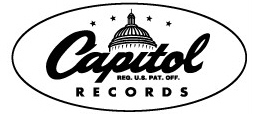 On May 12th, 1966, the first mono mix of "I'm Only Sleeping" deemed usuable at the time (remix 5) was made in the control room of EMI Studio Three by George Martin, Geoff Emerick and 2nd engineer Jerry Boys. Since Capitol Records in the US put in an application for three new songs to compile a new album to be entitled “Yesterday…And Today,” EMI proudly offered this song as one of the three. These mixes were quickly made and were unique to this American album, since they went back later to give the song a better mono mix for its eventual British release on “Revolver.” On May 12th, 1966, the first mono mix of "I'm Only Sleeping" deemed usuable at the time (remix 5) was made in the control room of EMI Studio Three by George Martin, Geoff Emerick and 2nd engineer Jerry Boys. Since Capitol Records in the US put in an application for three new songs to compile a new album to be entitled “Yesterday…And Today,” EMI proudly offered this song as one of the three. These mixes were quickly made and were unique to this American album, since they went back later to give the song a better mono mix for its eventual British release on “Revolver.”
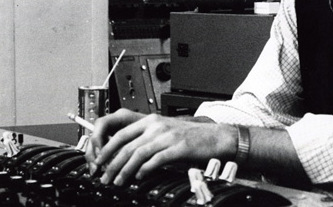 The unique features of this mono mix mostly comprise the backward guitar overdub, which are heard as follows: There are no backward guitars heard in the first verse, but they first appear at the end of the first bridge during the words “taking my time” and then in the third verse during the words “staring at the ceiling.” The backward guitar solo continues into the words “please don’t spoil” that are sung afterward. Finally, during the song's conclusion, the backward guitar is faded up just after the triplet-strums of John’s acoustic guitar. The unique features of this mono mix mostly comprise the backward guitar overdub, which are heard as follows: There are no backward guitars heard in the first verse, but they first appear at the end of the first bridge during the words “taking my time” and then in the third verse during the words “staring at the ceiling.” The backward guitar solo continues into the words “please don’t spoil” that are sung afterward. Finally, during the song's conclusion, the backward guitar is faded up just after the triplet-strums of John’s acoustic guitar.
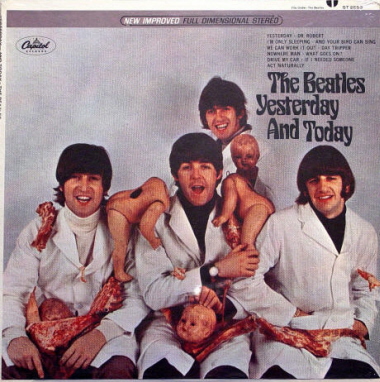 On May 20th, 1966, George Martin and engineers Geoff Emerick and Phil McDonald got together in the control room of EMI Studio One to make the first stereo mixes of this song. I say “mixes” because one was made for the stereo version of Capitol’s “Yesterday…And Today" album and the other was made for the UK “Revolver” album. The one intended for Capitol wasn’t initially used by them, most likely because it didn’t arrive in the US in time. Therefore, they created a “duophonic stereo” version from the mono mix they received earlier. Some later pressings of the album, such as those distributed through the Capitol Record Club since 1968 and from the Winchester pressing plant since 1973, contain this stereo mix, although the old “duophonic” version was still included on most copies of the album throughout the printing of this vinyl album. On May 20th, 1966, George Martin and engineers Geoff Emerick and Phil McDonald got together in the control room of EMI Studio One to make the first stereo mixes of this song. I say “mixes” because one was made for the stereo version of Capitol’s “Yesterday…And Today" album and the other was made for the UK “Revolver” album. The one intended for Capitol wasn’t initially used by them, most likely because it didn’t arrive in the US in time. Therefore, they created a “duophonic stereo” version from the mono mix they received earlier. Some later pressings of the album, such as those distributed through the Capitol Record Club since 1968 and from the Winchester pressing plant since 1973, contain this stereo mix, although the old “duophonic” version was still included on most copies of the album throughout the printing of this vinyl album.
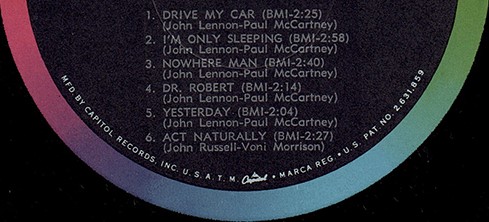 The unique features of the backward guitar on this US stereo mix are as follows: It appears first in the second verse on the lines “running everywhere at such a speed” and “till they find there’s no need,” however, it does not appear in the third verse as it does on the US mono version. The backward guitar solo fades in a little later in this version but continues into the word “please” after the instrumental section ends. Also, the backward guitar conclusion begins directly after the word “sleeping” at the end of the song. The unique features of the backward guitar on this US stereo mix are as follows: It appears first in the second verse on the lines “running everywhere at such a speed” and “till they find there’s no need,” however, it does not appear in the third verse as it does on the US mono version. The backward guitar solo fades in a little later in this version but continues into the word “please” after the instrumental section ends. Also, the backward guitar conclusion begins directly after the word “sleeping” at the end of the song.
The second stereo mix made at this session, which was used on the British “Revolver” album and is the common mix heard to this day, is identical to the American version except that the backward guitars begin immediately when the instrumental section starts and conclude precisely when this section ends.
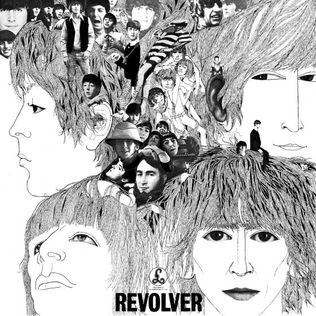 The final two mixes that were made of “I’m Only Sleeping” in 1966 were both mono mixes, the second of which was used on the British mono “Revolver” album. (They mistakenly numbered these mixes 5 and 6 instead of 6 and 7.) This version actually has the most backward guitar of any version. The backward guitar features include the following: The second verse during the words “everywhere at such a speed” and “there’s no need,” the third verse during the words “staring at the ceiling,” they end when the instrumental section concludes and they begin early during the conclusion right after the final word "sleeping." The final two mixes that were made of “I’m Only Sleeping” in 1966 were both mono mixes, the second of which was used on the British mono “Revolver” album. (They mistakenly numbered these mixes 5 and 6 instead of 6 and 7.) This version actually has the most backward guitar of any version. The backward guitar features include the following: The second verse during the words “everywhere at such a speed” and “there’s no need,” the third verse during the words “staring at the ceiling,” they end when the instrumental section concludes and they begin early during the conclusion right after the final word "sleeping."
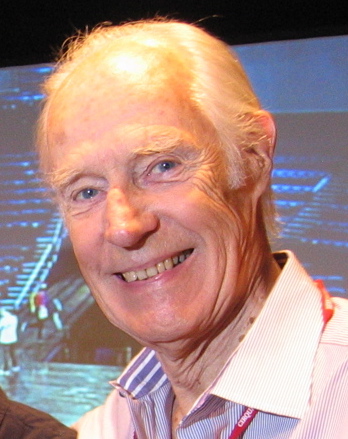 George Martin and Geoff Emerick returned to the original tapes in 1995 to create mixes for both the vibraphone rehearsal and "take one" of "I'm Only Sleeping" that was originally recorded on April 27th, 1966. Both of these new mixes were included on the 1996 "Anthology 2" release. George Martin and Geoff Emerick returned to the original tapes in 1995 to create mixes for both the vibraphone rehearsal and "take one" of "I'm Only Sleeping" that was originally recorded on April 27th, 1966. Both of these new mixes were included on the 1996 "Anthology 2" release.
 Sometime in 2022, George Martin's son Giles Martin, along with engineer Sam Okell, returned to the original tapes of "I'm Only Sleeping" to create a new mix using new digital technology, including AI, to separate the Beatles instruments that were originally recorded onto a single track. While they were at it, they also created a mix of the vibrophone rehearsal of the song, "take two" which conluded with Beatles' chatter, the sped up "take five," and "Mono Mix RM1" as detailed above. All of these new mixes were included in the Deluxe editions of "Revolver." Sometime in 2022, George Martin's son Giles Martin, along with engineer Sam Okell, returned to the original tapes of "I'm Only Sleeping" to create a new mix using new digital technology, including AI, to separate the Beatles instruments that were originally recorded onto a single track. While they were at it, they also created a mix of the vibrophone rehearsal of the song, "take two" which conluded with Beatles' chatter, the sped up "take five," and "Mono Mix RM1" as detailed above. All of these new mixes were included in the Deluxe editions of "Revolver."
Song Structure and Style
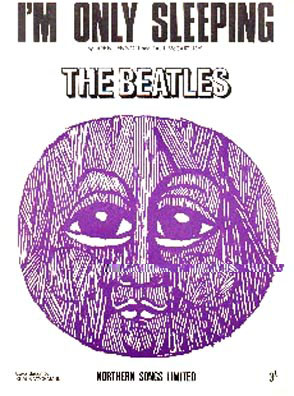 While a “chorus” was something that Lennon and McCartney used quite sparingly in their formative writing years, it was becoming more frequent as time went on. Not only does “I’m Only Sleeping” make use of a chorus, it actually has TWO choruses, both heard twice in the song. So, not only were The Beatles in an experimenting mood in the studio, they also manifested this spirit in their compositions. While a “chorus” was something that Lennon and McCartney used quite sparingly in their formative writing years, it was becoming more frequent as time went on. Not only does “I’m Only Sleeping” make use of a chorus, it actually has TWO choruses, both heard twice in the song. So, not only were The Beatles in an experimenting mood in the studio, they also manifested this spirit in their compositions.
The general framework of this song is 'verse/ chorus/ verse/ chorus/ bridge/ verse (including solo)/ chorus/ bridge/ verse/ chorus' (which becomes ababcabcab). No introduction is deemed necessary, although a unique, fading “psychedelic” conclusion is employed.
 With an upward strum on John’s acoustic guitar, we are ushered headlong into the first nine-measure verse. John’s vocals begin right on the downbeat as if suddenly woken from a deep sleep. Jangly acoustic guitars rule the day with John singing solo until the ninth measure where Paul McCartney answers his final line “float upstream.” With an upward strum on John’s acoustic guitar, we are ushered headlong into the first nine-measure verse. John’s vocals begin right on the downbeat as if suddenly woken from a deep sleep. Jangly acoustic guitars rule the day with John singing solo until the ninth measure where Paul McCartney answers his final line “float upstream.”
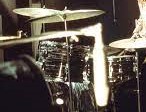 The first chorus then appears which is only six measures long, two measures short of the expected and uniform eight-measure length we’re used to hearing. Paul and George’s background vocals hover as a backdrop to John’s pleas to be left alone, while Ringo slams away drearily as if also in a dream-filled haze. The length of this chorus is now appropriately shortened as Lennon seems to wearily begin to shut his eyes after the word “sleeping,” as if a desire to do just that is coming over him. His guitar playing even stops as do all the instruments except for Paul’s tip-toeing bass guitar. In fact, every time the word “sleeping” occurs in the song, John appears to drift off to one degree or another as if fighting off a long night out. The first chorus then appears which is only six measures long, two measures short of the expected and uniform eight-measure length we’re used to hearing. Paul and George’s background vocals hover as a backdrop to John’s pleas to be left alone, while Ringo slams away drearily as if also in a dream-filled haze. The length of this chorus is now appropriately shortened as Lennon seems to wearily begin to shut his eyes after the word “sleeping,” as if a desire to do just that is coming over him. His guitar playing even stops as do all the instruments except for Paul’s tip-toeing bass guitar. In fact, every time the word “sleeping” occurs in the song, John appears to drift off to one degree or another as if fighting off a long night out.
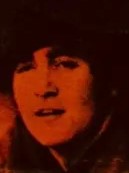 Lennon then jolts back into consciousness, as does the rest of the group, for the second nine-measure verse, this being identical in structure to the first. As he explains how the rest of the world needlessly runs “everywhere at such a speed,” we hear how that “sleepy feeling” keeps creeping up on him, symbolized by the recurring backward guitar phrases that keep blurring his train of thought. Lennon then jolts back into consciousness, as does the rest of the group, for the second nine-measure verse, this being identical in structure to the first. As he explains how the rest of the world needlessly runs “everywhere at such a speed,” we hear how that “sleepy feeling” keeps creeping up on him, symbolized by the recurring backward guitar phrases that keep blurring his train of thought.
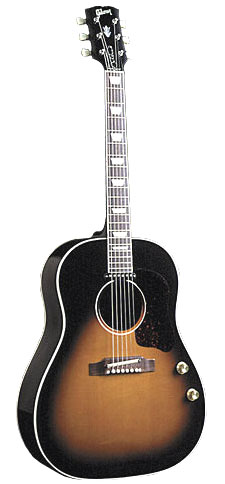 A new chorus with a completely different set of lyrics comes next, but this time when he says “sleeping,” he and the band actually appear to nod off momentarily, signaled by another upward strum on John’s acoustic guitar. Paul is the only one still barely awake as his sleepy bass line plays two harmonized notes that act as a glass of cold water to wake John up for his next thought in the bridge. Because of their giving in to sleep, this chorus is extended to a more arbitrary eight measures. A new chorus with a completely different set of lyrics comes next, but this time when he says “sleeping,” he and the band actually appear to nod off momentarily, signaled by another upward strum on John’s acoustic guitar. Paul is the only one still barely awake as his sleepy bass line plays two harmonized notes that act as a glass of cold water to wake John up for his next thought in the bridge. Because of their giving in to sleep, this chorus is extended to a more arbitrary eight measures.
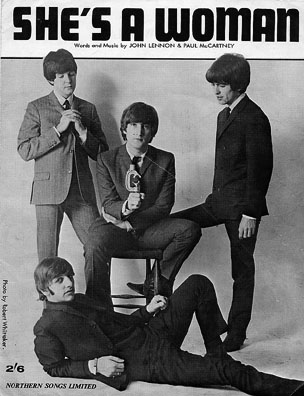 This bridge is only four measures in length and, although only half of what is usually used by the group, is similar to what is employed in “She’s A Woman” for instance. An interesting element here is how John’s rising and falling syncopated melody line is accentuated by Paul’s inventive harmony on the words “going by my window,” which ascends while John descends. John keeps alert for the "Beatles break" in the fourth measure with the words “taking my time,” which close the bridge. This bridge is only four measures in length and, although only half of what is usually used by the group, is similar to what is employed in “She’s A Woman” for instance. An interesting element here is how John’s rising and falling syncopated melody line is accentuated by Paul’s inventive harmony on the words “going by my window,” which ascends while John descends. John keeps alert for the "Beatles break" in the fourth measure with the words “taking my time,” which close the bridge.
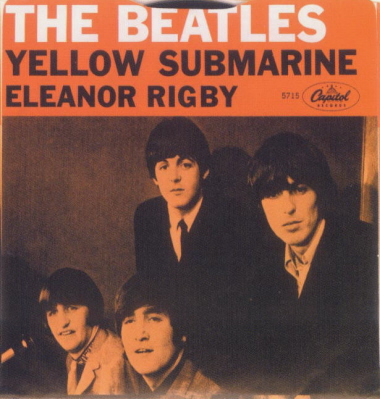 A third nine-measure verse is then heard, although the last five measures comprise the song's instrumental section. The winding, backward-slurping effects of both of the guitar overdubs do well to signify “the moment before you’re falling asleep, that little twilight moment,” as Paul described his state of mind when he came up with the idea for “Yellow Submarine.” A third nine-measure verse is then heard, although the last five measures comprise the song's instrumental section. The winding, backward-slurping effects of both of the guitar overdubs do well to signify “the moment before you’re falling asleep, that little twilight moment,” as Paul described his state of mind when he came up with the idea for “Yellow Submarine.”
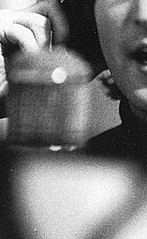 The second chorus is then repeated which also ends with them briefly falling asleep, Paul again being the one to barely keep awake, even giving an audible yawn. After being startled awake for the repeat of the bridge, John repeats the first verse with impatient syncopated stabs at his acoustic guitar in anticipation of getting it over with to get back to rest. The first chorus is then heard to round things off and, after the word “sleeping” is sung, he gives in for good. The swirling backward guitars take over his conscious and subconscious mind to transport him into a much desired state of bliss. The second chorus is then repeated which also ends with them briefly falling asleep, Paul again being the one to barely keep awake, even giving an audible yawn. After being startled awake for the repeat of the bridge, John repeats the first verse with impatient syncopated stabs at his acoustic guitar in anticipation of getting it over with to get back to rest. The first chorus is then heard to round things off and, after the word “sleeping” is sung, he gives in for good. The swirling backward guitars take over his conscious and subconscious mind to transport him into a much desired state of bliss.
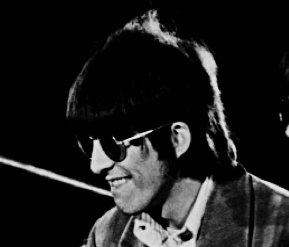 Although Paul did collaborate to an unknown degree, John Lennon owns the show on this track. His sped-up bleary-eyed vocals dominate your attention as does his acoustic rhythm guitar work. George definitely breaks new ground as his intricately delivered backward guitar runs seep into the mix which command recognition. He also can always be counted on to fill in the odd third harmony when needed. Although Paul did collaborate to an unknown degree, John Lennon owns the show on this track. His sped-up bleary-eyed vocals dominate your attention as does his acoustic rhythm guitar work. George definitely breaks new ground as his intricately delivered backward guitar runs seep into the mix which command recognition. He also can always be counted on to fill in the odd third harmony when needed.
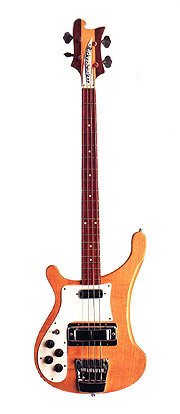 Paul keeps to recording the bass with the backing track to provide the soft patter required for this song, relinquishing any temptation to overdub an "in your face" bass part as done in the recently recorded “Paperback Writer” and “Rain.” His always impeccable harmony vocals are also on display here, as are his collaborative backward guitar accentuations at the end of the song. While only simple drum fills were called for, Ringo puts in a lazily appropriate performance along with some highly compressed cymbal accents that ring out in the seventh measure of the longer choruses of the song. Paul keeps to recording the bass with the backing track to provide the soft patter required for this song, relinquishing any temptation to overdub an "in your face" bass part as done in the recently recorded “Paperback Writer” and “Rain.” His always impeccable harmony vocals are also on display here, as are his collaborative backward guitar accentuations at the end of the song. While only simple drum fills were called for, Ringo puts in a lazily appropriate performance along with some highly compressed cymbal accents that ring out in the seventh measure of the longer choruses of the song.
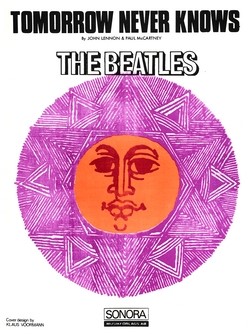 While he may have done much experimentation with drugs by this time, Lennon explained the lyrics to “I’m Only Sleeping” as a simple reflection of his love for being lazy. He may wake up “early in the morning,” but he’s “still yawning” when he lifts his head, so he’d rather just “float upstream” into dreamland once again. This last phrase, however, may indicate a bit of LSD influence since this was similarly expressed in another of his "Revolver" songs "Tomorrow Never Knows," encouraging his listeners to "turn off your mind, relax and float downstream." As if expressing anger at Paul for waking him up for a writing session, he pleads “please don’t wake me, no, don’t shake me. Leave me where I am.” After all, nothing is wrong, “I’m only sleeping” anyway. While he may have done much experimentation with drugs by this time, Lennon explained the lyrics to “I’m Only Sleeping” as a simple reflection of his love for being lazy. He may wake up “early in the morning,” but he’s “still yawning” when he lifts his head, so he’d rather just “float upstream” into dreamland once again. This last phrase, however, may indicate a bit of LSD influence since this was similarly expressed in another of his "Revolver" songs "Tomorrow Never Knows," encouraging his listeners to "turn off your mind, relax and float downstream." As if expressing anger at Paul for waking him up for a writing session, he pleads “please don’t wake me, no, don’t shake me. Leave me where I am.” After all, nothing is wrong, “I’m only sleeping” anyway.
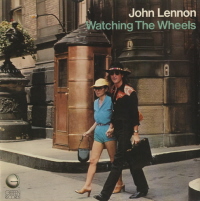 In actuality, it appears that Lennon was always chided about his inactivity. When it came to his school grades as a youngster, to his wanting to sit back and enjoy his fame in the blitz of “Beatlemania,” to his subsequent retirement in the late '70s, “People say I’m crazy doin’ what I’m doin’,” as he expressed in his posthumous top ten hit “Watching The Wheels.” This time, though, he thinks “they’re crazy” for “running everywhere at such a speed.” Why should he work so hard pumping out songs for the next Beatles album? Why can’t he just enjoy the rest from all the craziness of touring, recording and movie making? He’d rather be “miles away” in sleep. In actuality, it appears that Lennon was always chided about his inactivity. When it came to his school grades as a youngster, to his wanting to sit back and enjoy his fame in the blitz of “Beatlemania,” to his subsequent retirement in the late '70s, “People say I’m crazy doin’ what I’m doin’,” as he expressed in his posthumous top ten hit “Watching The Wheels.” This time, though, he thinks “they’re crazy” for “running everywhere at such a speed.” Why should he work so hard pumping out songs for the next Beatles album? Why can’t he just enjoy the rest from all the craziness of touring, recording and movie making? He’d rather be “miles away” in sleep.
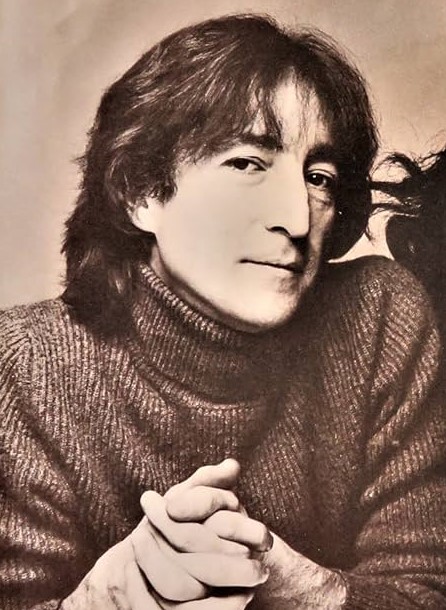 Not that John’s unaware of what’s going on around him. He’s “keeping an eye on the world going by,” just as he was “watching the wheels go round and round” in his later life. In 1966 he was “lying there and staring at the ceiling,” while in 1980 he was “doing fine watching shadows on the wall.” In any event, John was apparently a man who needed some space, not pushed. “Taking my time”: that’s evidently all he wanted to do. Not that John’s unaware of what’s going on around him. He’s “keeping an eye on the world going by,” just as he was “watching the wheels go round and round” in his later life. In 1966 he was “lying there and staring at the ceiling,” while in 1980 he was “doing fine watching shadows on the wall.” In any event, John was apparently a man who needed some space, not pushed. “Taking my time”: that’s evidently all he wanted to do.
American Releases
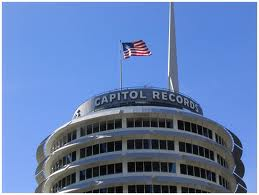 On June 20th, 1966, nearly seven weeks earlier than in Britain, the US got to hear “I’m Only Sleeping” as a standout track on the makeshift Capitol album “Yesterday…And Today.” Even though EMI prepared a stereo mix especially for this American release, Capitol couldn’t wait for it and, instead, prepared a “duophonic” stereo mix from the mono version that they had earlier received. As indicated above, all through the years that the album was in print, most copies of the album had this fake stereo mix of the song. (Incidentally, all of the tape versions of the album, be it cassette, 8-track, 4-track or reel-to-reel, had the true stereo mix, as did the Capitol Record Club and Winchester pressings of the album.) "Yesterday...And Today" was then released on January 21st, 2014, as an individual compact disc, both the mono and stereo versions of the album being included on a single CD. This release contains the original mono mix as contained on the vinyl album but the later British stereo mix. Incidentally, this release featured both the "trunk" cover and the "butcher" cover. On June 20th, 1966, nearly seven weeks earlier than in Britain, the US got to hear “I’m Only Sleeping” as a standout track on the makeshift Capitol album “Yesterday…And Today.” Even though EMI prepared a stereo mix especially for this American release, Capitol couldn’t wait for it and, instead, prepared a “duophonic” stereo mix from the mono version that they had earlier received. As indicated above, all through the years that the album was in print, most copies of the album had this fake stereo mix of the song. (Incidentally, all of the tape versions of the album, be it cassette, 8-track, 4-track or reel-to-reel, had the true stereo mix, as did the Capitol Record Club and Winchester pressings of the album.) "Yesterday...And Today" was then released on January 21st, 2014, as an individual compact disc, both the mono and stereo versions of the album being included on a single CD. This release contains the original mono mix as contained on the vinyl album but the later British stereo mix. Incidentally, this release featured both the "trunk" cover and the "butcher" cover.
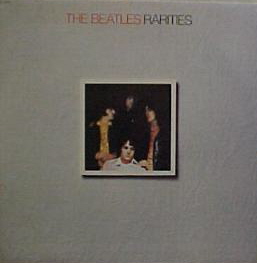 The "duophonic" mix became so well known in the US that, on March 28th, 1980, Capitol included the common British stereo mix of “I’m Only Sleeping” on their “Rarities” album. While this now is the version that most people know, the original fake stereo mix contained on “Yesterday…And Today” is undoubtedly considered the “rarity” today. The "duophonic" mix became so well known in the US that, on March 28th, 1980, Capitol included the common British stereo mix of “I’m Only Sleeping” on their “Rarities” album. While this now is the version that most people know, the original fake stereo mix contained on “Yesterday…And Today” is undoubtedly considered the “rarity” today.
The first time the original British "Revolver” album was made available in the US was the "Original Master Recording" vinyl edition released through Mobile Fidelity Sound Lab sometime in 1985. This album included "I'm Only Sleeping" and was prepared utilizing half-speed mastering technology from the original master tape on loan from EMI. This version of the album was only available for a short time and is quite collectible today.
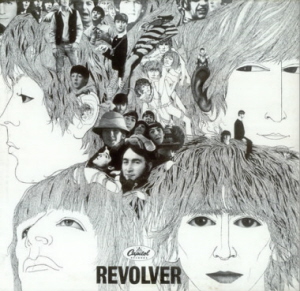 On April 30th, 1987, the British “Revolver” album was released on compact disc for the first time, the vinyl edition coming out on July 21st, 1988. The album was then remastered and re-released on September 9th, 2009 on CD and on November 13th, 2012 on vinyl. A newly mixed edition of "Revolver" created by Giles Martin with AI Technology was released on vinyl and CD on October 28th, 2022. On April 30th, 1987, the British “Revolver” album was released on compact disc for the first time, the vinyl edition coming out on July 21st, 1988. The album was then remastered and re-released on September 9th, 2009 on CD and on November 13th, 2012 on vinyl. A newly mixed edition of "Revolver" created by Giles Martin with AI Technology was released on vinyl and CD on October 28th, 2022.
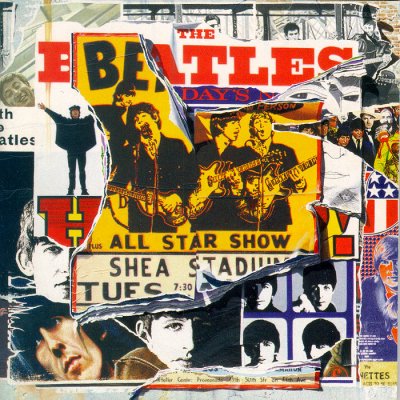 On March 18th, 1996, some unheard studio recordings of "I'm Only Sleeping" were featured on “Anthology 2.” This set included the vibraphone rehearsal as well as the first attempt at a remake of “I’m Only Sleeping” as recorded on April 29th, 1966. On March 18th, 1996, some unheard studio recordings of "I'm Only Sleeping" were featured on “Anthology 2.” This set included the vibraphone rehearsal as well as the first attempt at a remake of “I’m Only Sleeping” as recorded on April 29th, 1966.
Also around this same time, an “Anthology 2 Sampler” vinyl album was released to promote the commercially available set. This sampler was sent to radio stations and included the entire track, rehearsal and all.
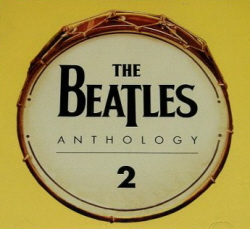 And, since we were in the age of compact discs, an “Anthology 2 CD Sampler” was also produced at about the same time and sent to radio stations to promote the new album, “I’m Only Sleeping” being contained therein as well. And, since we were in the age of compact discs, an “Anthology 2 CD Sampler” was also produced at about the same time and sent to radio stations to promote the new album, “I’m Only Sleeping” being contained therein as well.
 Not to be forgotten, of course, is the box set “The Beatles In Mono,” which contains the British mono mix. This September 9th, 2009 CD release was the first time this mono version was made available in America, the vinyl edition first coming out on September 9th, 2014. Not to be forgotten, of course, is the box set “The Beatles In Mono,” which contains the British mono mix. This September 9th, 2009 CD release was the first time this mono version was made available in America, the vinyl edition first coming out on September 9th, 2014.
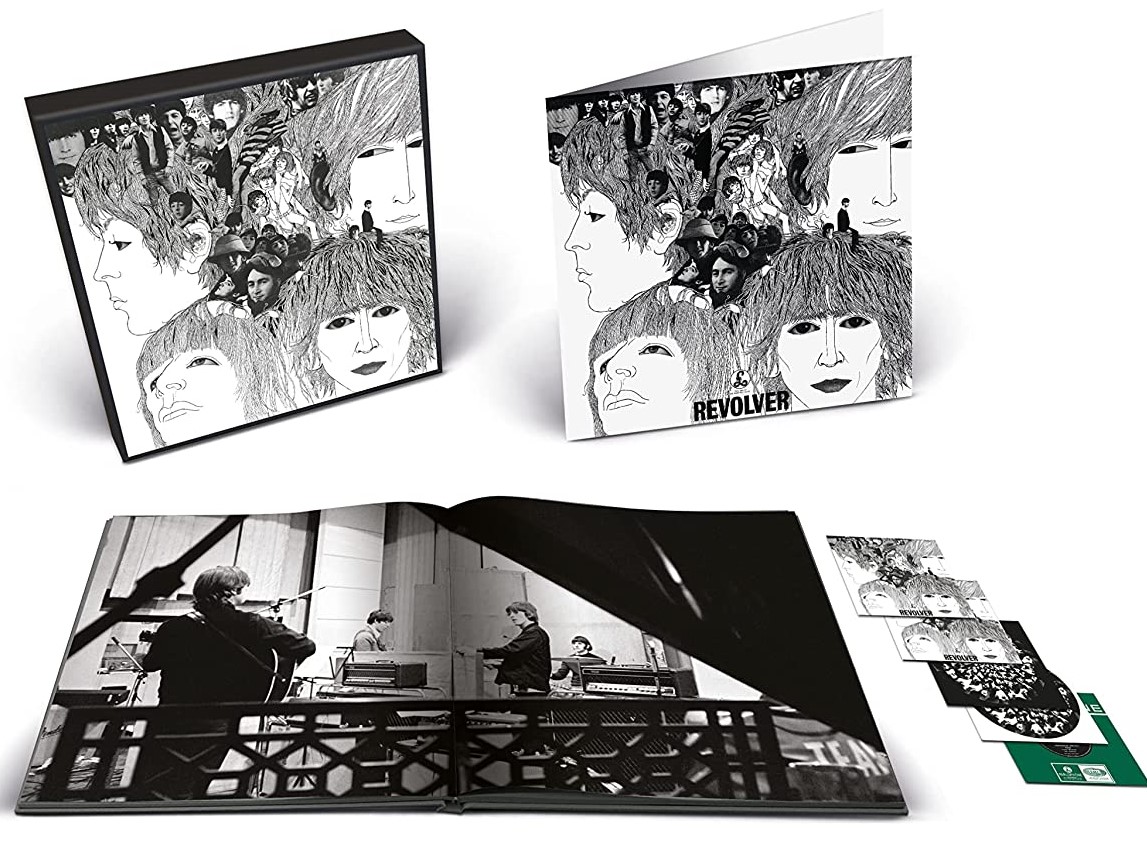 On October 28th, 2022, various new editions of the 14 track “Revolver” album were released that feature the amazing new stereo mix by Giles Martin. The “Special Edition Deluxe 2CD Set” features “I'm Only Sleeping” in its new stereo mix as well as “take 2” from the 1966 session tapes. The “Deluxe Edition,” which is available as a 5 CD box set and a 4LP / 1 EP box set, includes these versions as well as the rehearsal fragment with vibraphone, "take 5" from the 1966 session tapes, and the original mono master from 1966. The 2022 Giles Martin stereo mix of the album was also made available for the first time as a vinyl picture disc for a limited time. On October 28th, 2022, various new editions of the 14 track “Revolver” album were released that feature the amazing new stereo mix by Giles Martin. The “Special Edition Deluxe 2CD Set” features “I'm Only Sleeping” in its new stereo mix as well as “take 2” from the 1966 session tapes. The “Deluxe Edition,” which is available as a 5 CD box set and a 4LP / 1 EP box set, includes these versions as well as the rehearsal fragment with vibraphone, "take 5" from the 1966 session tapes, and the original mono master from 1966. The 2022 Giles Martin stereo mix of the album was also made available for the first time as a vinyl picture disc for a limited time.
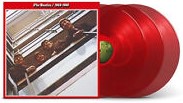 A new 50th Anniversay edition of the compilation album "The Beatles / 1962 - 1966" ("The Red Album") was released on November 10th, 2023. This expanded release included 12 more songs for a total of 38 tracks, including the new mix of "I'm Only Sleeping" detailed above, and was made available as a double CD and as a triple vinyl release on both black and red vinyl. A new 50th Anniversay edition of the compilation album "The Beatles / 1962 - 1966" ("The Red Album") was released on November 10th, 2023. This expanded release included 12 more songs for a total of 38 tracks, including the new mix of "I'm Only Sleeping" detailed above, and was made available as a double CD and as a triple vinyl release on both black and red vinyl.
Live Performances
Even though the group did finish up their touring days after the entire “Revolver” sessions were complete, they were well into the beginnings of the “studio experimental” phase of their career. Therefore, “I’m Only Sleeping,” along with all of the other material from "Revolver," was never performed live, nor could it have been to their satisfaction.
Conclusion
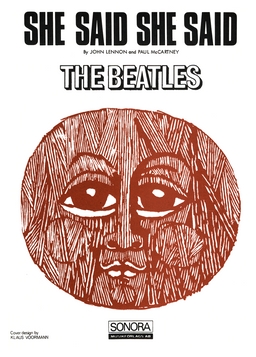 While John Lennon was beginning to break away from the mold of writing songs about relationships on “Rubber Soul” (“Nowhere Man” and “The Word” departing entirely from the boy/girl concept), his writing on “Revolver” instituted the unpredictability he was truly capable of, as evidenced in his books. John’s contributions to this album, although acknowledging Paul’s limited hand therein, weren’t as easily definable lyrically as we were used to from him. Fans and critics alike could hardly make heads or tails out of “And Your Bird Can Sing” or “She Said She Said,” let alone “Tomorrow Never Knows.” Therefore, “I’m Only Sleeping,” so it was thought, must be about more than just celebrating a lazy day. Since “Dr. Robert” had obvious drug overtones, this song was considered by most to have been written with these indulgences in mind as well. While John Lennon was beginning to break away from the mold of writing songs about relationships on “Rubber Soul” (“Nowhere Man” and “The Word” departing entirely from the boy/girl concept), his writing on “Revolver” instituted the unpredictability he was truly capable of, as evidenced in his books. John’s contributions to this album, although acknowledging Paul’s limited hand therein, weren’t as easily definable lyrically as we were used to from him. Fans and critics alike could hardly make heads or tails out of “And Your Bird Can Sing” or “She Said She Said,” let alone “Tomorrow Never Knows.” Therefore, “I’m Only Sleeping,” so it was thought, must be about more than just celebrating a lazy day. Since “Dr. Robert” had obvious drug overtones, this song was considered by most to have been written with these indulgences in mind as well.
And so began the irresistible tendancy of fans to look for hidden meanings.
Song Summary
“I’m Only Sleeping”
Written by: John Lennon / Paul McCartney
-
Song Written: April 26th - 27th, 1966
-
Song Recorded: April 27 & 29, May 5 & 6, 1966
-
First US Release Date: June 20, 1966
-
-
US Single Release: n/a
-
Highest Chart Position: n/a
-
British Album Release: Parlophone #PCS 7009 “Revolver”
-
Length: 2:58
-
Key: E flat minor
-
Producer: George Martin
-
Engineers: Geoff Emerick, Phil McDonald
Instrumentation (most likely):
-
John Lennon - Lead Vocals, Rhythm Guitar (1964 Gibson J-160E)
-
George Harrison – Rhythm Guitar (1962 Gibson J-160E), Lead Guitar (1961 Sonic Blue Fender Stratocaster), Harmony Vocals
-
Paul McCartney - Bass Guitar (1964 Rickenbacker 4001S), Lead Guitar in conclusion (1962 Epiphone Casino ES-230TD), Harmony Vocals
-
Ringo Starr – Drums (1964 Ludwig Super Classic Black Oyster Pearl)
Written and compiled by Dave Rybaczewski
|
IF YOU WOULD LIKE TO MAKE A DONATION TO KEEP THIS WEBSITE UP AND RUNNING, PLEASE CLICK BELOW!
Sign Up Below for our MONTHLY BEATLES TRIVIA QUIZ!
|